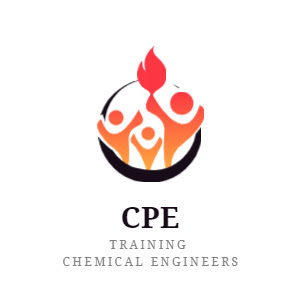Hello All,
Hope everyone is doing good.
Welcome back to PharmaCalculations.com! In today’s post, we dive into the fascinating world of Photochemical Reactor Design — a topic gaining immense attention in modern pharmaceutical manufacturing due to its green, efficient, and highly selective nature. This post was drafted for more than an year. During my course work in PhD i got an opportunity to go through the basics of Beer - Lambert Law and its application in Photo chemistry and i've starting drafting the post since then by adding the scale up part.
We’ll start by understanding the working principle, then design a lab-scale system with detailed calculations, and finally demonstrate how to scale up a photochemical reactor correctly — based on absorbance, not just residence time.
What is a Photochemical Reactor?
A photochemical reactor uses light energy (typically UV or visible) to activate molecules, driving chemical reactions that may not proceed thermally. Photons excite electrons in molecules, leading to bond cleavage, rearrangement, or radical initiation.
Common applications in pharma:
-
Photochlorination or bromination
-
UV-induced oxidation
-
[2+2] cycloadditions
-
Photoredox catalysis using visible light
Why is absorbance more important than residence time in photochemical scale-up?
Because the reaction is light-driven. Maintaining photon absorption ensures reaction efficiency, unlike thermal reactors where time dominates.
What is quantum yield in photochemistry?
It’s the number of molecules transformed per photon absorbed. It shows how effective a photon is in driving reaction.
How do you ensure complete light absorption?
By ensuring high absorbance (A ≥ 2) through suitable concentration, path length, and light wavelength.
Can visible light be used in photochemistry?
Yes, especially with photocatalysts like Ru(bpy)₃²⁺ or eosin Y. Reactions include C–C coupling, oxidations, and rearrangements.
Why are annular reactors common in lab systems?
They allow tight control of optical path (1–2 cm), surrounding the lamp and maximizing absorption.
What happens if light penetrates too deeply?
It indicates low absorbance. Most photons pass through without being absorbed, resulting in poor reaction efficiency.
What are typical residence times for photoreactors?
Generally 30–60 minutes, depending on photon flux, conversion targets, and reaction order.
How do we handle heat generation from lamps?
Use cooling jackets or flow reactors with thin films. LEDs are preferred for low heat load.
What is photon flux and how is it measured?
Photon flux is the number of photons per unit area per second. It’s measured in einstein/cm²·s using actinometry or radiometry.
Can I use batch mode for photochemical reactions?
Yes, but continuous flow offers better light penetration, heat control, and scalability.
Which geometry is ideal for scale-up?
Thin-film flow cells, multiple annular tubes, or LED panel-based systems that maintain short path lengths and uniform illumination.
Basic Principle
The rate of a photochemical reaction depends on light absorption, governed by:
Where:
-
= rate of reaction (mol/L·s)
-
= quantum yield (mol/einstein)
-
= photon flux (einstein/cm²·s)
-
= molar absorptivity (L/mol·cm)
-
= concentration of reactant (mol/L)
| Parameter | Value |
|---|---|
| Reaction | Photochlorination of toluene |
| Quantum yield | 0.5 mol/einstein |
| Wavelength | 365 nm (UV) |
| Photon flux | 4 × 10⁻⁶ einstein/cm²·s |
| Molar absorptivity | 150 L/mol·cm |
| Concentration | 0.2 mol/L |
| Optical path length | 1.0 cm |
| Target conversion | 80% |
| Flowrate | 30 mL/min = 0.03 L/min |
Step-by-Step Lab Reactor Design
Step - 1: Calculate Absorbance
Nearly all incident photons are absorbed — ideal for efficiency.
Step - 2: Calculate Reaction Rate
Step - 3: Calculate Required Residence Time
Step - 4: Reactor Volume
Lab reactor volume = 1.33 L
Let’s scale the process from 0.03 L/min to 5 L/min, i.e., 167× flow-rate increase.
Do not scale volume directly. Instead, preserve absorbance instead of residence time as the absorbance is the driving force for the scale - up.
Step - 1: Maintain Absorbance
Step - 2: Calculate Required Reactor Volume
Step - 3: Determine Required Irradiated Area
Required irradiated surface area = 2.22 m²





 Hi! I am Ajay Kumar Kalva, owner of this site, a tech geek by passion, and a chemical process engineer by profession, i'm interested in writing articles regarding technology, hacking and pharma technology.
Hi! I am Ajay Kumar Kalva, owner of this site, a tech geek by passion, and a chemical process engineer by profession, i'm interested in writing articles regarding technology, hacking and pharma technology. 
Could you please perform scale up calculation same for bromination.
ReplyDeleteI had done photo bromination in a pilot scale with uv light but with that it takes higher wattage as well as higher bct compared to lab.
Please connect with us at pharmacalc823@gmail.com
DeleteHow you calculate that light absorbed % 100 with help of absorbance value 30.
ReplyDeleteDear Anonymous,
DeleteThanks for going through the post and sharing your comment.
the relationship between absorbance (A) and % light absorbed is governed by Beer–Lambert’s Law, and here's how the math works:
The percentage of light absorbed can be calculated using the formula:
%Absorbed=(1−10^−𝐴)×100
So for an absorbance of 30:
%Absorbed=(1−10^−30)×100≈100%
Because
10^−30 is a very tiny number (almost zero), the transmitted light is nearly zero, and the absorbance corresponds to essentially full absorption.
So yes, A = 30 implies that over 99.9999999999999999999999999999% of light is absorbed — for practical purposes, that’s 100%.
For any further queries, please feel free to comment.
But sincerely requesting to commenting with your good name next time.
Thanks & Take care
Keep on visiting for new stuff